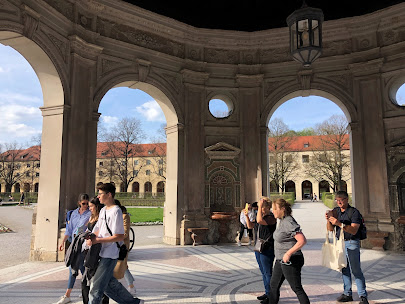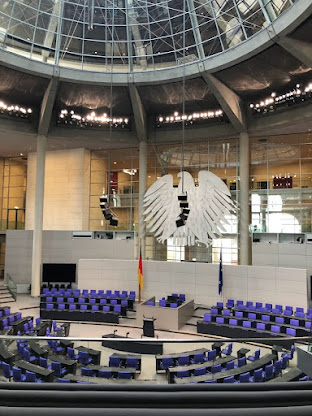Blocker Blog - Entry 6: The Case for Munich
According to our itinerary, a weekend trip to Munich would be our last IES trip of the semester and I was thrilled to be a part of it. However, there were a couple of obstacles that delayed our trip to the city in Bavaria. As I have seen a couple of weeks before, there have been protests from the workers of Deutsche Bahn, a.k.a. DB that can last a couple of hours of which in turn can affect the efficiency of public transportation. The Friday that we had our trip planned was the same day that another protest was scheduled to take place; therefore as a consequence all of the train trips were canceled in the morning and we ended up taking a late night train to Munich. We arrived at our hotel around 2 in the morning; just like in Dresden the ride felt shorter than it should be because of the high speed train we were in.
Despite those setbacks, we were able to make the next two days worth it!; Early the next morning we were given the option to visit one of two museums, one containing the second most valuable collections of old master paintings in the country, the Alte Pinakothek, and the other hosting modern and contemporary art, the Pinakothek der Moderne. Being the curious art historian that I am, I chose to visit the Alte Pinakothek and I was taken away by the vast collection. My first impressions were amazement and awe when seeing the vast amounts of work present in every room. The museum, from my perspective, felt like it had a complete collection because it covered vast amounts of periods of western painting. If I were to compare this to my accessibility to a broad range of artistic periods in western at in the United States, I would only think about LACMA in the West or the MET in the East; however, Germany feels like it has many institutions like the Alte Pinakothek in various cities in the country and not just in every far and few in between. I mean it makes sense that Germany would have a vast amount of western artworks since it was their region of origins. The US has its own kind of artistic traditions that deviate from those in Europe with even bigger collections throughout the country.
After a couple hours we were given time to rest and to take the tram to the Altstadt, the medieval center of the city, where we would meet again by the Glockenspiel to start a city tour. It was in this tour where we were told an extended history of the city, from its founding to the present day. We were told old tales and myths that surrounded historic buildings. It all felt really informative and fascinating to know; the atmosphere was great too since the sun felt nice for the first time in a while. People were wearing different iterations of the dirndl and the lederhosen
, Bavarian traditional dress, and there were many shops ceiling beer steins and other objects. It all felt really festive and light, it was Springfest after all. As we were told on our tour, Munich also had a dark history during the mid 20th century which does not feel to be much of a topic of conversation as it is in Berlin. This was the same place where the Nazi Party first formed in 1920 by Hitler, it was here where the first concentration camp, Dachau, was built. There were nearly not as many monuments that reminded me of what happened here as much as in Berlin; it almost felt like Munich played no part in the Nazi regime and later the war. I do hope that at least people take notice of such history as it means that it does not repeat itself.






Comments
Post a Comment